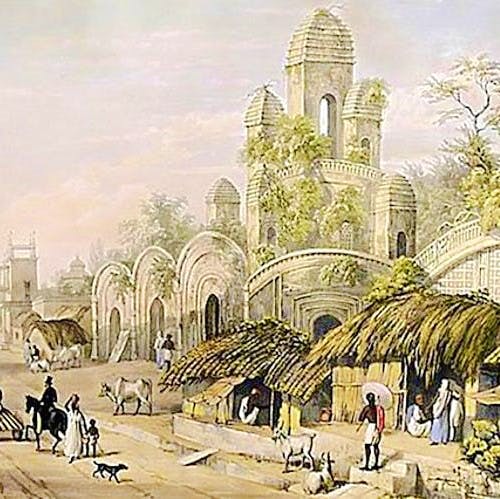Kolkata’s Black Pagoda is a must-visit – it was once the tallest building in the city and survived an earthquake and a cyclone on the same day!
This 1730s Building Survived An Earthquake & A Cyclone On The Same Day, And Is Still Around
Shortcut
What Makes It Awesome
The Black Pagoda is a Navaratna or nine-turreted Kali temple situated on Rabindra Sarani (Chitpore Road) just north of Kumartuli. Built in 1730-31, the highest turret of the temple originally rose to the height of about 165 feet, higher than the Shahid Minar (157 feet). It was the highest building in Calcutta in the 18th century.
The temple was commissioned by Gobindaram Mitra, a wealthy salt merchant and landlord in north Kolkata. In the early days of the East India Company’s rule over Calcutta, the city’s administration was divided into two sections. The current BBD Bag area, which was the European quarters of the city, was administered by an English collector. The so-called 'Black Town' or current North Kolkata was administered by a 'Black Zamindar' (deputy collector). Gobindaram Mitra was appointed as the second 'Black Zamindar'.
Keeping with the practice of constructing temples as a way to show off one’s wealth, Gobindaram Mitra commissioned his grand brick-built Kali temple complex around 1725. The temple was completed in 1730-31, with the tallest spire rising 165 feet high. Because it was visible from far away, every ship coming into Calcutta would use the temple as the navigational reference point. Since the temple was built by the 'Black Zamindar', it entered the shipping logs as the Black Pagoda, and became famous in that name in the contemporary and later English literature on Calcutta.
However, the Black Pagoda’s glory would not last long. It appears that the temple was never properly completed, and there were obvious structural weaknesses. This was revealed when there was an earthquake and a deadly cyclone on the same day in Calcutta in 1737, which together significantly damaged the temple. This was when the highest spire of the temple collapsed, and was never repaired.
The rate of the temple’s gradual decay can be seen when you compare these three 18th-19th century paintings.
Pro-Tip
If you walk 200 meters north from the entrance to Banamali Sarkar Street {Kumartuli} along the Rabindra Sarani tramline, the temple will be on your left. Curiously, despite its near complete destruction, the temple somehow kept functioning and continues to do so even today. It has received a recent facelift, and some older spires have been replaced with newer triangular ones.


